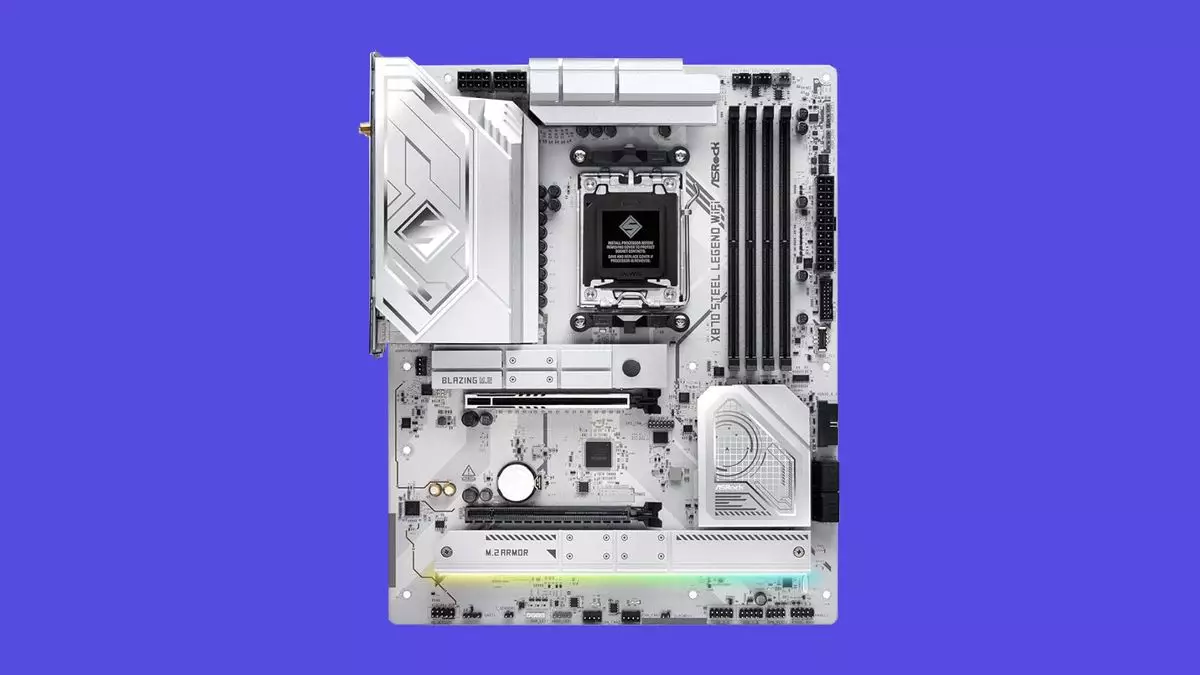February was a crucial month for ASRock as whispers of failing AMD Ryzen 9000 chips within X870 motherboards began circulating, igniting discussions in forums and online communities. The data provided by users who experienced these malfunctions suggested a trend that raised alarm among enthusiasts and consumers alike. This situation has garnered considerable attention because, in the tech community, even a hint of instability in core components can lead to widespread distrust.
In a recent blog post, ASRock ventured to clarify the situation surrounding these burnt chips. They offered insights from an inspected motherboard where the CPU exhibited burn damage, not only addressing consumer concerns but also straddling the thin line between transparency and corporate reputation safeguarding. While they identified a lack of visible damage and confirmed that, after cleaning, the motherboard could function normally, such findings only further muddled the waters.
Crumbs of Truth: A Case of Debris?
The blog revealed that the culprit might be far less dramatic than initially thought—crumbs, or debris, in the CPU socket might have been the nemesis causing the shutdowns. While an intriguing angle, one cannot help but wonder if this places responsibility on the end-users. After all, how often do motherboard failures arise from user errors regarding maintenance and cleanliness? This point might serve to mitigate ASRock’s liability but casts a shadow on the collective responsibility between manufacturers and users.
Moreover, a singular motherboard’s examination cannot serve as a reliable metric for evaluating the entire line-up of X870 boards. Herein lies a critical flaw in ASRock’s messaging: it does not fully capture the broader implications of the problem that many users have experienced. It elicits an almost negligent example from statistical analysis. A deeper inquiry is essential; without comprehensive data surrounding multiple units, including the poor-performing boards, it is difficult to assess the actual risks or faults in engineering.
Addressing Booting Issues: A Complicated BIOS Narrative
ASRock’s blog notes the introduction of a BIOS update, version 3.20, to remedy boot failures linked to random Ryzen 9000 CPUs. While they assert that prior BIOS versions are not responsible for any CPU damage, there’s a palpable tension in this assertion. Users might feel frustrated that essential features weren’t functional until a specific patch was introduced. It leads one to question the efficacy and quality assurance processes behind software development in hardware technology.
The duality of the BIOS updates raises further skepticism regarding the responsibility—if the system wasn’t booting due to coding bugs, it cannot simply wash its hands of any potential chipset damage. This lack of a transparent correlation risks alienating committed ASRock patrons who expect reliability and optimal performance amidst these tumultuous updates.
The Robustness Test: Engineering vs. Reality
ASRock takes pride in the resilience of their hardware engineering, indicating that a motherboard could function after being cleaned, even if signs of damage remained. This is telling. It depicts a reality that while some components survive critical failures, the fragility of other interdependent systems still fuels uncertainty. One could argue that this shows strength, but it also highlights vulnerabilities inherent in motherboard ecosystems.
The existence of burnt CPUs is still a concerning narrative; thus, while a motherboard can continue operating under stress tests, that merely masks the broader implications of system failure. ASRock’s claims of robustness may not resonate with users experiencing data loss or hardware malfunctions in real-world applications associated with these failures.
Confronting Community Concerns
ASRock has acknowledged these incidents by actively reaching out to affected users for feedback and retrieving additional motherboards for analysis. This engagement is a step in the right direction. Still, there’s an underlying gulf between addressing issues and genuinely resolving the root causes. The lack of clarity and substantial data surrounding the incidents mean ASRock has their work cut out for them in rebuilding trust and ensuring a loyal user base.
The stakes are high for ASRock and all involved in the world of high-performance computer components. Users are looking for transparency and efficiency, demanding that manufacturers step up and innovate continuously. While ASRock’s recent blog offers a glimpse into the ongoing efforts to rectify issues, the pathway to full accountability remains fraught with challenges. It is a stark reminder that even in high-tech manufacturing, quality control and user education are of paramount importance, and a few crumbs shouldn’t overshadow the bigger picture.

